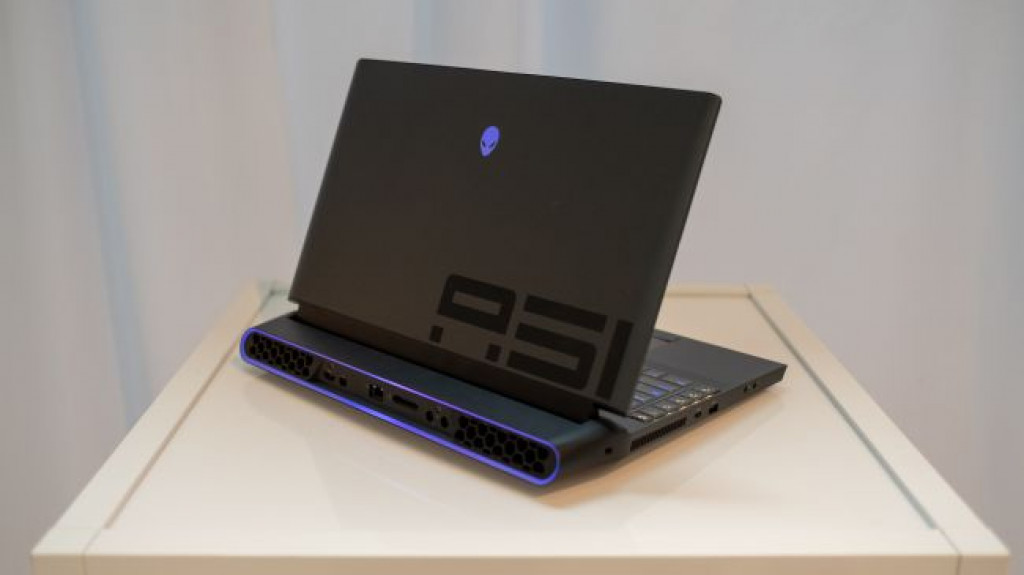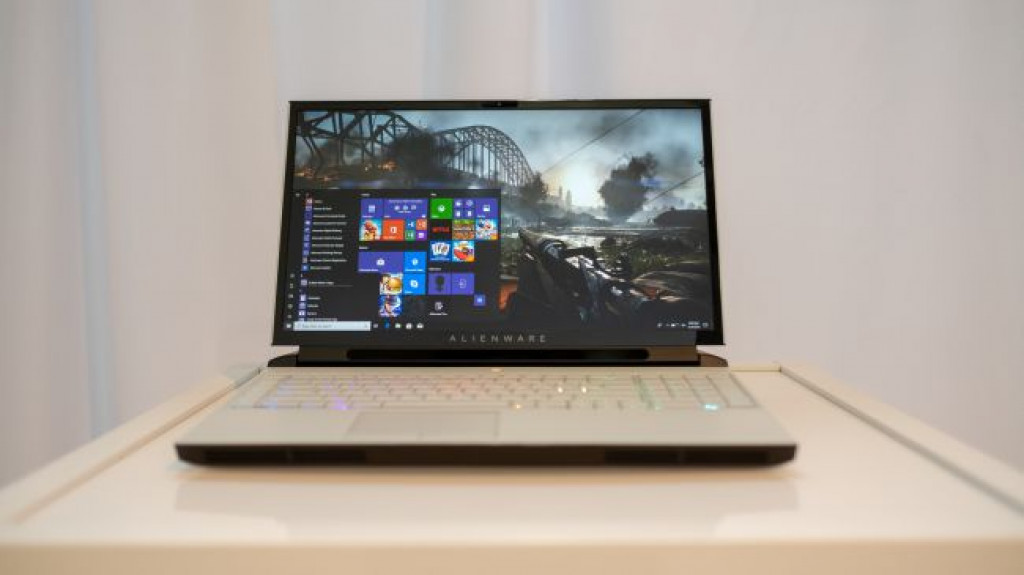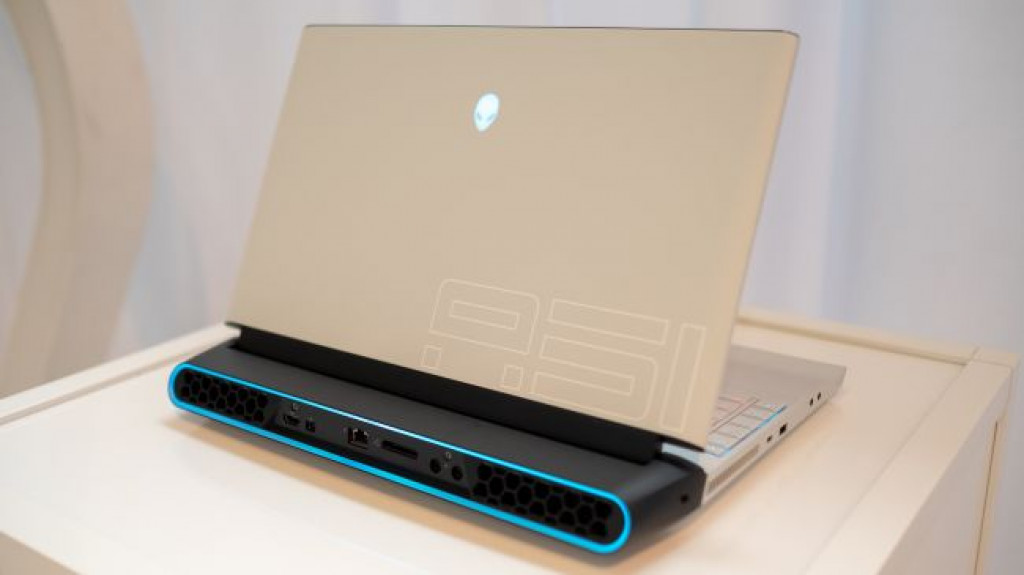
EARLY VERDICT
The Alienware-51m takes the term “desktop replacement laptop” to heart with its first widely upgradeable system. While the display won’t blow your mind, the style and upgrade options might.
FOR
- Excellent style
- Upgradeable CPU and graphics
- Plenty of ports
AGAINST
- Just-OK display
- GPU upgrade is complicated
In a sea of thin-and-light gaming laptops that aren’t a far cry from the performance found in gaming desktops, where does that leave the desktop replacement form factor? Dell seems to have found the answer in the Alienware Area-51m gaming laptop, debuting at CES 2019.
This is a desktop replacement laptop in the truest sense of the term, allowing users to upgrade almost every facet of the system, including the graphics. While definitely not a new development, this is a rarity in the category – especially from mass market vendors like Dell.
The Area-51m could be the laptop to blaze the trail toward every gaming laptop in this form factor acting more like a desktop. And, if not, you’ve got a brand new one right here that will do the job.

Price and availability
Dell will ask for a cool $2,549 (about £2,002, AU$3,757) for the Area-51m when it lands on January 29, but we’ve been assured more affordable models are on the way.
This starting price will get you a 9th generation, hexa-core Intel Core i7-8700 processor, Nvidia GeForce RTX 2060 graphics, a 1TB hard drive with an 8GB SSD attached for faster booting and 8GB of 2,400MHz DDR4 memory behind a 17.3-inch Full HD (1,920 x 1,080) display at a 60Hz refresh rate.
The amount of upgrade options for the Area-51m is immense, so rather than list every last one, here’s what a top-end model looks like: an octa-core Intel Core i9-9900K processor, Nvidia RTX 2080 graphics, 64GB of memory, and options for three storage drives, the top-end being 232GB (2 x 116GB) worth of Intel Optane SSD space plus a 1TB (+8GB SSHD) hybrid drive. This all sits beneath an FHD display with a 144Hz refresh rate as well as Nvidia G-Sync and Tobii eye-tracking technology.
Unfortunately, it’s unknown at the moment what this monster would cost. Either way, the Alienware Area-51m is obviously a high-end gaming laptop, so we can’t wait to see what these more affordable options look like.
UK and Australian pricing and availability information is forthcoming.

Design and display
Being a completely new laptop from Dell and Alienware, the Area-51m design is just plain exciting. This is a large laptop, and Alienware took that to heart, making the Area-51m look like a sci-fi starship even more so than previous designs.
Weighing a huge 8.54 pounds (3.87kg), this laptop shouldn’t follow you everywhere you go, but rather act as a desktop replacement. And, not like those other gaming laptops that are simply called as much on account of their size – this one is almost completely upgradeable.
The laptop is wrapped a comfy-feeling soft-touch plastic in either “Lunar White” or “Dark Side of the Moon” color options with a stylish ‘A51’ logo placed right of center on the screen lid, and puts AlienFX RGB lighting in just the right places.
The rear of the laptop contains almost all of the laptop’s ports, which include the PCIe-based Alienware Graphics Amplifier port, one Thunderbolt 3 with DisplayPort, three USB 3.1 ports (one with PowerShare), an HDMI 2.0 port, a mini DisplayPort 1.4, RJ-45 ethernet, audio out and a global headset jack and two DC power ports.
Yes, this laptop is so powerful that it requires two power supplies.
All of these ports are wrapped by a single RGB LED that looks like some sort of futuristic thruster, to keep with the spaceship aesthetic. Beyond that, the only other AlienFX lights on this laptop are within the touchpad and the keyboard, and that’s just fine. We appreciate the laptop’s subdued yet futuristic look, clearly taking lots of inspiration from both sci-fi and hyper car racing.
The Area-51m keyboard remains unchanged from previous Alienware 17 designs, using the TactX form factor with 2.2mm of travel, anti-ghosting technology, per-key RGB lighting with AlienFX support. The keyboard is a bit too deep for our taste, but the feedback is excellent.
Likewise, the touchpad is completely RGB backlit and tracks smoothly. However, we’re not fans of click buttons on touchpads.
The 17.3-inch Area-51m display isn’t going to blow you away, but it is a thin-bezel design and offers Tobii eye tracking technology beneath the panel in higher-end configurations. Otherwise, you’re looking at Full HD (1,920 x 1,080) panels across the board with 60Hz refresh rate to start going up to 144Hz and with options for G-Sync.
Colors look vibrant and rich on the display, and it shines somewhat brightly at 300 nits. That said, the display does only meet 72% of the color gamut, so you’re going to miss out on a bit of detail there in your movies and games.

Performance
This is where things get truly interesting for the Area-51m, because the vast majority of the parts within this laptop are actually upgradeable. That includes the usual SSD and RAM upgrades as well as the desktop-grade CPU and GPU.
Any user familiar with socketing desktop processors can upgrade the one inside the Area-51m. However, we’re told that, in order to upgrade your graphics, you’ll need to remove the cooling solution first, and use RTX graphics modules provided by Dell, but that’s still impressive. With this, the Area-51m is a true desktop replacement laptop, making the sea of rivals look like charlatans.
Dell has also developed a new version of its fan-driven Cryo-Tech 2.0 cooling platform which now moves more ambient air through the system than ever before, which is absolutely necessary given the desktop-grade silicon in the system.
Throw in overclocking tools through the pre-installed Alienware Command Center app, and you’re looking at an honest-to-goodness desktop within the confines of a laptop.
As for battery life, Dell hasn’t even provided a number, which is probably a good idea. This may be a laptop, but don’t count on it to last for very away from an outlet.

Early verdict
With thin-and-light gaming laptops all the rage, and with similar power profiles to that of gaming desktops, we’ve wondered how desktop replacement laptops would continue to fit in all this. If you ask Dell and Alienware, it’s making this form factor work more like a standalone PC.
While we weren’t wowed by the display on hand, it will be fine for the average and competitive gamer alike. Also, it’s a shame that you need to dig rather deep (and buy modules directly from Dell) to get upgraded graphics, but it’s a step forward nevertheless.
The Area-51m should hopefully start the trend of desktop replacement gaming laptops take the ‘desktop’ bit of that moniker more seriously.
Source: techradar.com









































